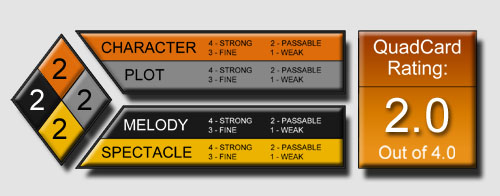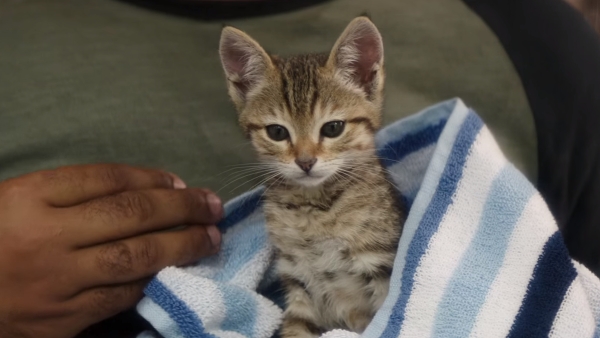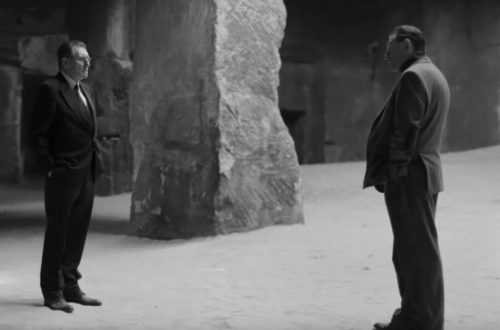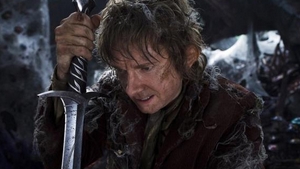 Bagginsis? What is… Bagginsis? Is it chewy? Is it crunchy? There’s a sense of familiarity throughout The Hobbit that never quite plays in its favor. Whether it is the musical cues we are so familiar with after his first three Lord of the Rings films, the insertion of characters that never appeared in the source material to help us remember the other films, or the painfully similar arc The Fellowship of the Ring has to The Hobbit, director Peter Jackson is giving us exactly what we expect. Which is precisely why I’m so disappointed with his latest journey into Middle Earth. While it never rings of phoning it in because of the production values and the sheer glory of it all, there’s something hollow inside The Hobbit that keeps it from capturing the magic of the first three films.
Bagginsis? What is… Bagginsis? Is it chewy? Is it crunchy? There’s a sense of familiarity throughout The Hobbit that never quite plays in its favor. Whether it is the musical cues we are so familiar with after his first three Lord of the Rings films, the insertion of characters that never appeared in the source material to help us remember the other films, or the painfully similar arc The Fellowship of the Ring has to The Hobbit, director Peter Jackson is giving us exactly what we expect. Which is precisely why I’m so disappointed with his latest journey into Middle Earth. While it never rings of phoning it in because of the production values and the sheer glory of it all, there’s something hollow inside The Hobbit that keeps it from capturing the magic of the first three films.
A lot of the loss of magic was the fact that so much of the original trilogy seemed like an advertisement for New Zealand, 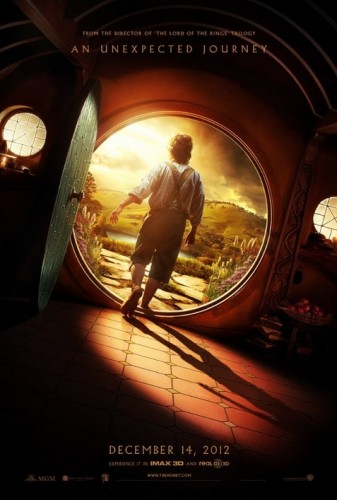 with roaming hillside views and wonderful settings. The Shire, where Bilbo and Frodo lived, was an actual town built up. Instead, it seems that much of The Hobbit is built on sound stages and utilizes green screens. When we begin our journey in The Shire as Gandalf lures Bilbo to join the 13 Dwarves on the quest to reclaim their lost mountain of gold from the great dragon Smaug, it feels as if it was filmed inside a warehouse. This troubling situation appears again and again. Witness the opening sequence that introduces Smaug, the Lonely Mountain, and the Dwarves plight—much of it feels like a video game cinematic instead of the setup for an extravagant 2 hour, 49 minute epic. That isn’t to say that the original trilogy never utilized green screens or CGI, but they often utilized it in the gigantic battle set-pieces instead of the sleepy setting of The Shire.
with roaming hillside views and wonderful settings. The Shire, where Bilbo and Frodo lived, was an actual town built up. Instead, it seems that much of The Hobbit is built on sound stages and utilizes green screens. When we begin our journey in The Shire as Gandalf lures Bilbo to join the 13 Dwarves on the quest to reclaim their lost mountain of gold from the great dragon Smaug, it feels as if it was filmed inside a warehouse. This troubling situation appears again and again. Witness the opening sequence that introduces Smaug, the Lonely Mountain, and the Dwarves plight—much of it feels like a video game cinematic instead of the setup for an extravagant 2 hour, 49 minute epic. That isn’t to say that the original trilogy never utilized green screens or CGI, but they often utilized it in the gigantic battle set-pieces instead of the sleepy setting of The Shire.
Something must also be said that The Hobbit originally began production as a single film, and has ballooned into three. There are actual moments here when you feel Peter Jackson extending the runtime to make this work. When the 13 Dwarves are introduced, the sequence feels overlong. Perhaps 15 minutes are spent just on this, and yet as an audience member it will be quite difficult to remember any of their names save for their leader, Thorin Oakenshield. The problem here lies with the source material, which was overly cute in this particular instance and named the 13 Dwarves moreso to rhyme well than to be distinct characters. Three of the characters go by the name Ori, Nori, and Dori. However, I have to hand it to Jackson here because while you may not know their names, he cast them well enough to the point where each is distinct visually.
This leads me to my biggest problem with the film as a whole, though, and that is the fact that there are far too many characters within our group. Gandalf literally counts each of his company out loud on at least three different occasions, which totals 15 with himself. If you are going to have 13 Dwarves, make them expendable. Raise the stakes. Kill one off. Do something with them that makes me care for them as individuals instead of just as a group of warriors. This is a flaw with the source material, for sure, but it also is a problem with Jackson. He has the power to make changes and improve the narrative. The 13 don’t have any bearing on the continuity of The Lord of the Rings, so killing one will not hurt. At the very least, separate some for long lengths of time and make them grow as individual characters and attach ourselves to them. With two films remaining, it remains to be seen what future lies in store for the little balls of fist and fury, but I hope something is done to make them more than just a 26-legged character.
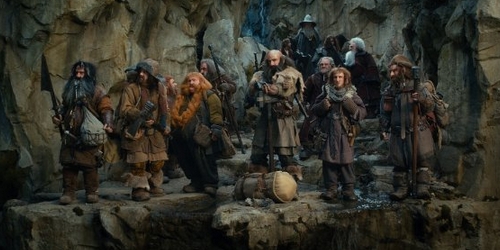
Despite all of my grumblings, An Unexpected Journey never feels crippling to endure. The 3D is used well in a few instances, particularly in a campfire sequence with trolls and inside the Misty Mountain, and the newfangled 48 frames per second technology never hindered my experience. There are a few jarring moments like when Bilbo opens a chest inside his home artificially fast, but overall the effect balanced itself by creating seamless 3D that never blurs. There’s also the allure of being back inside Middle Earth. There are few films out there that even come close to that setting, even if it is a bit hobbled here. The acting is also brought to a new level by Thorin, played by Richard Armitage.
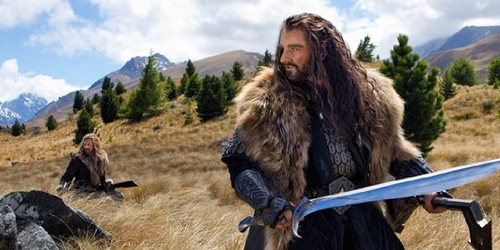
Despite the diminutive stature of his character (he actually stands at an impressive 6′ 2”), he conveys power and ferocity with the quiet hurt of a family with a grudge. There’s also series newcomer Martin Freeman as the much younger Bilbo Baggins. Here we get an interesting dynamic versus Frodo in the original trilogy. Freeman’s Bilbo has grown out of his youthful wonder that Gandalf fondly recalls, and instead has become a bit of a hermit. He wants things to fit into a nice schedule, and at one point just a few thousand yards into the journey he actually wants to turn back around because he is missing his handkerchief. He’s mostly useless in battle, and yet finds his place. There’s also the incomparable Andy
Serkis as Gollum, a character you knew you would long to see again yet still impresses with every slurred syllable.
G-S-T RULING:
Even for fans of The Lord of the Rings trilogy, An Unexpected Journey feels far too familiar and sometimes excruciatingly extended. Yes, we are back in Middle Earth, but the magic from the settings and the world is often lost. With more than a handful of deus ex machina elements to get our group out of harm’s way, the threat also feels diminished. Jackson is no longer at the top of his game it seems, though he shows signs of what made the original trilogy so magical. For those that were never into the original trilogy, this will not be a turning point. This is the most whimsical and child-focused of both the source material and the films, but there are elements, particularly the Wargs and the final set-piece, that many children will not be able to handle. In the end, this was an expected journey, and I can’t see a reason to revisit this material in the future and I only hope that Jackson can recapture some of the magic for the remaining two films.
